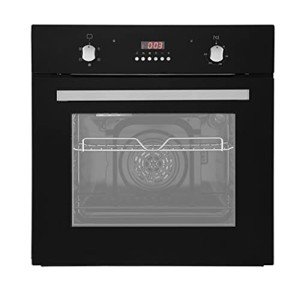What's The Job Market For Kitchen Built In Oven Professionals Like?
페이지 정보

본문
The Ultimate Guide to Kitchen Built-In Ovens: What You Need to Know
When it concerns modern cooking areas, the built-in oven is more than simply an appliance; it is a statement of design, effectiveness, and performance. Built-in ovens are designed to integrate perfectly into kitchen cabinetry, supplying a streamlined appearance that enhances the overall design of the kitchen. This article checks out the numerous types, benefits, and factors to consider of kitchen built-in ovens, and supplies insights to help you make an informed buying choice.

Table of Contents
- What is a Built-In Oven?
- Types of Built-In Ovens
- 2.1 Single Ovens
- 2.2 Double Ovens
- 2.3 Steam Ovens
- 2.4 Wall Ovens
- Benefits of Built-In Ovens
- Secret Features to Look For
- Setup Considerations
- Frequently Asked Questions
- Conclusion
1. What is a Built-In Oven?
A built-in built oven oven is an oven developed to be set up within kitchen cabinetry instead of as a freestanding unit. This style enables higher visual flexibility while maximizing readily available kitchen area. Built-in ovens come in numerous sizes and configurations, catering to varied cooking needs and kitchen styles.
2. Kinds Of Built-In Ovens
Understanding the different kinds of built-in ovens can help customers select the best one for their kitchen built in oven (my response) setups and cooking styles.
2.1 Single Ovens
Single ovens are compact and developed to fit within basic cabinet widths. These ovens typically offer sufficient space for daily cooking requirements, such as baking or roasting. They come in numerous electric integrated oven or gas designs and are typically easy to use with uncomplicated controls.
2.2 Double Ovens
For individuals who regularly host large gatherings or take pleasure in cooking multi-course meals, double ovens can be a lifesaver. These systems include 2 different oven compartments and offer increased cooking capacity, enabling simultaneous baking or roasting at different temperatures.
2.3 Steam Ovens
Steam ovens make use of steam to cook food, which assists retain moisture and nutrients. These ovens are progressively popular amongst health-conscious people and premium cooks. Steam ovens can be built-in alongside traditional ovens for a versatile kitchen setup.
2.4 Wall Ovens
Wall ovens are created to be set up within a wall instead of under countertops. They offer hassle-free gain access to and can be integrated ovens with other wall-mounted kitchen appliances. Wall ovens might be readily available as single or double units.
3. Benefits of Built-In Ovens
Choosing a built-in oven features numerous advantages:
- Space Efficiency: Built-in ovens can be tucked into cabinetry, releasing up valuable kitchen area.
- Aesthetic Appeal: They supply a cleaner, more contemporary appearance than standard freestanding ovens.
- Variety of Designs: Built-in ovens are offered in numerous surfaces, including stainless-steel, black, and white, allowing combination with various kitchen styles.
- Boosted Functionality: Many built-in ovens come equipped with sophisticated features such as self-cleaning modes, touch screens, and convection innovation.
4. Key Features to Look For
When choosing a built-in oven, consider the following features to boost cooking functionality:
- Temperature Range: A more comprehensive temperature range permits for greater flexibility in cooking different dishes.
- Self-Cleaning Options: Look for models that use self-cleaning capabilities to conserve effort and time on maintenance.
- Convection Cooking: Convection ovens circulate air to cook food uniformly and rapidly.
- Wi-Fi Connectivity: Some modern built-in ovens included Wi-Fi capability, enabling users to manage settings or pre-heat the oven remotely.
- Security Features: Check for features like automated shut-off, child locks, and cooling systems to ensure optimal safety.
5. Setup Considerations
Before buying a built-in oven, particular setup aspects need to be dealt with:
- Size and Dimensions: Ensure the picked oven fits the designated area. Measure the height, width, and depth of the desired setup location.
- Ventilation: Gas ovens require adequate ventilation to ensure safety. Consult an expert if required.
- Electrical Requirements: Check the electrical requirements of the picked unit to ensure compatibility with existing outlets.
- Professional Installation: If you're not experienced in appliance installation, it may be a good idea to look for expert support to make sure proper fitting and compliance with regional codes.
6. Frequently Asked Questions
Q1: How do built-in ovens differ from freestanding ovens?A: Built-in ovens are set up in cabinets for a seamless appearance, while freestanding ovens stand alone and do not require built-in setup.
Q2: Can you set up a built-in oven yourself?A: While some individuals with experience might select to set up an oven themselves, it is generally recommended to hire a professional to guarantee electric or gas connections are securely installed. Q3: Are built-in ovens energy-efficient? A: Many built-in ovens feature energy-saving technology and are typically more efficient compared to older models. Always examine energy rankings before buying. Q4: Do built-in ovens require unique maintenance?A: Regular maintenance consists of keeping
the interior tidy and looking for Kitchen Built In Oven any wear and tear. Self-cleaning
designs can simplify this task substantially. Q5: What is the typical life-span of a built-in oven?A: The typical life expectancy of a built-in oven is usually between 10 to 15 years, depending upon usage and maintenance practices. 7. Conclusion Investing in a built-in oven can enhance both the functionality and visual appeals of your kitchen. With various types and features offered, consumers
can choose designs that
best fit their cooking design and design preferences. Whether a skilled chef or a home cook, the advantages of going with a built-in oven are clear. By considering the info detailed in this guide, people can make educated decisions that will result in years of cooking pleasure. Additional Resources For more details on kitchen appliances, think about having a look at the following resources: Consumer Reports: Product evaluations and purchasing guides. Energy Star: Energy-efficient home appliance recommendations. Home Improvement Stores: Local specialists can supply additional insights and advice. Embarking on a kitchen remodelling or upgrade can be
an amazing journey, and choosing the ideal built-in oven plays an important rolein producing apractical and trendy cooking environment.

